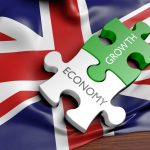The strength of a brand can be a firm's biggest asset. When two brands come together, it can be a difficult task to balance and integrate them both.
Stuart Lang, Founder and Creative Director of We Launch, shares his insight on brand convergence with Finance Monthly.
In the world of finance, the convergence of two institutions – outside of an M&A - is uncommon. Beyond this, we rarely see two financial brands come together for a common cause. However, when it does happen, it’s critical that they present a clear and unified proposition if they are to achieve success. And the value of that should not be underestimated; the Marketing Accountability Standards Board, whose research from 2018 found that brands contribute an average of 19.5% enterprise value.
Playing your cards right
So how do you successfully unify two brands, without losing the individual equity of each? And how do you present it to prospective investors and convince them to trust the new brand the way they did the old?
Therein lies the biggest challenge.
Different firms have different histories. Different people. Different clients and case studies. They probably have different messaging and imagery styles. And sometimes – different cultures.
Taking advantage of each distinction and bringing them together harmoniously can be a tricky task to comprehend. Brand Value as a monetary value consists of a number of interconnected factors - everything from financial forecast to brand strength and the role that brand plays in the day-to-day business.
The first step towards brand unification is deciphering what makes each business unique and how (or why) to dial up that essence in a unified proposition. After that, sitting down with stakeholders - both internal and external - and pinpointing their motivations is key.
The first step towards brand unification is deciphering what makes each business unique and how (or why) to dial up that essence in a unified proposition.
As well as knowledge of your competition through detailed auditing, which can also help clarify what sets your brand apart from others, whether it be positive or negative.
This depth of understanding will then inform which qualities to amplify and which to put to one side. In a game of Top Trumps, the victor is the one who knows which card to play in order to win a hand. The same thinking applies here. Identify the strongest individual criteria for each brand and take advantage of it. Whether it be the seniority of relationships, calibre of past deals, global reach, or the strength of the existing brand, choosing the right qualities and combining them strategically will help improve your odds of success.
Being as clear and frank in what you want to achieve with such a proposal is the number one goal. Your new brand's visual language needs to present a unified and clear value proposition, running a thread through all of your communication channels as a joint business.
A recent study from RedhouseBrand, analysing 25 financial sector brands, found that clarity in messaging was a key value for these brands to pursue. Being open and honest with what your brands are and what the new venture is really trying to achieve will go a long way to making it legitimate in the eyes of any new or existing stakeholders.
Nevertheless, sometimes that means making a considerable change - which can be difficult. Taking a risk can be the quickest way to stand out in a cluttered market however, and businesses shouldn’t be afraid to embrace that. Finance is about taking risks and if it means building a bigger and better brand together then it's most likely the best option to consider.
Considering the right people for the job
It is also worth considering who you bring in to collaborate with you on crafting a fresh approach. A brand is a valuable business asset, and whilst risk of change does offer the opportunity to win big, it’s much more reassuring when that risk is calculated and in the hands of experts.
[ymal]
If you do bring in branding experts, make sure to fully immerse them in your world and be honest with them about your ambitions. This means putting them in front of stakeholders, your investors and letting them reach out to clients. The more information they have on why you are doing this and how the brands are currently working as independent entities, the more likely they are to implement the changes needed.
This fine balancing act was exactly what M&A advisory firm JEGI CLARITY’s refresh as a single, unified brand faced. Two singular entities with proven track records in their respective markets, they needed to align themselves with potential investors who had no prior knowledge of them. Working closely with their leadership teams and forming a strong understanding of both businesses in their own right helped us translate the qualities that made them successful into a seamlessly unified brand proposition.
It was crucial this was maintained not just at a macro level but threaded through all communication materials – whether big or small. If all brand materials, from messaging to imagery to the website and social, can sing to one another then they can better emphasise the objective of the joint mission.
Seizing the opportunity to unite
The 2019 edition of Brand Finance’s GIFT report stated that intangible assets - such as your brand identity - account for 48% of overall enterprise value, so time is always of the essence. Putting any kind of brand reinvention, whether through necessity or not, on the back burner is always going to be the wrong thing to do. It is always worth remembering that your competitor is probably already hard at work on a new look or campaign to communicate their offering. So not putting the attention into yours now, could mean that you are pushed down the pecking order before you even have a chance to start.
Being ahead of the crowd is the best way to make the biggest impact and show that your value proposition is the best around. Acting decisively is far better than remaining static – because those that sit still run the risk of being overtaken by others.










